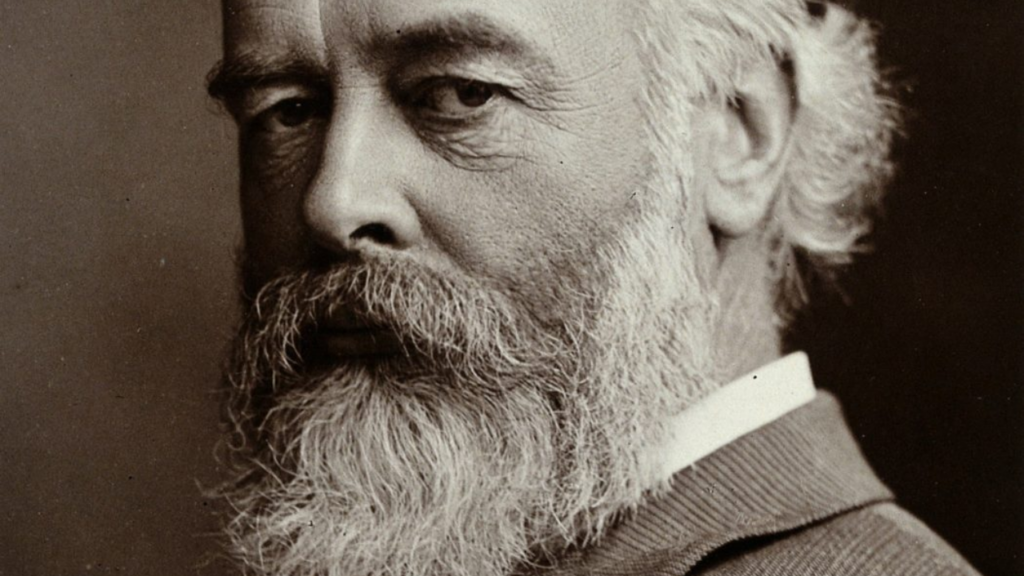Sir Oliver Lodge & Ether

Below is an extract from Sir Oliver Lodge’s book Ether And Reality: A Series of Discourses on the Many Functions of the Ether of Space, published in the United Kingdom in 1925.
Lodge lived 1851-1940 and was a principal of Birmingham University.
You can read or download the book from Google Books for free.
Apollonius of Tyana is said to have asked the Brahmins of what they supposed the Cosmos to be composed.
“Of the five elements.”
“How can there be a fifth,” demanded Apollonius, “beside water and air and earth and fire?”
“There is the ether,” replied the Brahmin, “which we must regard as the element of which the gods are made; for just as all mortal creatures inhale the air, so do immortal and divine natures inhale the ether.”
The first thing to realise about the Ether is its absolute continuity. Let me explain. Matter is discontinuous; it consists of portions with gaps between. you see this clearly enough in the stars; they are bodies separated by wide empty spaces, they are not massed together. There must be a reason for this; the reason is partly known, but is not easy: we will be satisfied with the fact that it is so. Matter is full of discontinuity; it consists mostly of empty space: the portions of matter in space are all well separated from each other in proportion to their size. Fire an infinitely long-range projectile into the sky, and the chances are it will not hit anything: Lord Kelvin reckoned that the chance of hitting anything by such a projectile was about the same as the chance of hitting a bird if you fired a gun at random. That is one of the first things to realise about matter: there are great gaps between its particles.
You may say, That is all very well for the sky and the stars and the planets; but what about the earth? What about a piece of rock, or furniture, or any solid object? Do you mean to say that the particles of a body like that are widely separated, with great spaces between them in proportion to their size, and that a straight line might penetrate them deeply without encountering a particle? Yes, I do: that is what I mean by the discontinuity of matter. It is discontinuous on a small scale as well as on a large scale. It does not appear so, but that is only because our senses are not fine enough to tell us about things on a small scale: we can only see things on a big scale. A microscope is of some assistance, but nothing like sufficient: no microscope, however powerful, can show us an atom, still less can it show us how an atom is composed and how far apart its ultimate particles are: we know this otherwise and indirectly. It is however common knowledge, now, that matter is built up of minute electric charges, both negative and positive, which are called electrons and protons. It is also known that these electric units are so extremely minute that they are separated from one another like the planets in the solar system: the greater part of the atom is empty space, just like the sky on a small scale. Or, more clearly, if we could take a solid body and magnify it sufficiently (which is impossible) we should see it something like the night sky.
Since the particles of matter are thus separated from each other and never in contact, it would seem to follow that they are all independent of each other, disconnected, nothing united them, – the particles completely separated by empty space. If there were nothing existent but matter, that would be so; there would be no unification, no binding force, no family relationship, nothing but separate independent particles; that is what would happen if Space were really empty; and the universe would not be a cosmos but a chaos.
We know better than that; we know that the stars are not independent of each other; they are bound together into systems; there is a unifying and connecting force between them, which is called Gravitation, though it is not fully understood. Hence the space between them cannot be really empty; the interspaces must be filled up somehow; there must be something which is without gaps, something really continuous, something which combines the whole together, welding all the separate bodies into a cosmos.
The same thing is true inside any solid body: the separated particles cohere, they are not independent of each other; there is no chaos to be found anywhere. The solid has a definite size and shape; and if it is a crystal its shape may be beautiful and very definite. There is evidently law and order reigning among the particles; however great the interstices between them, they must be full of something: space is not really empty, though it is empty of matter. Matter exists as separate particles, here one, there another. But the united “something” is not composed of particles at all; it is continuous: it united the particles with a force which is known as Cohesion.
What you choose to call this unifying “something” is of no consequence. The Ancients sometimes spoke of the “Ether,” possibly as an addition to the usual four elements, and Sir Isaac Newton adopted this term for the connecting medium. The optical medium connects the particles together in a solid or a liquid, and the same medium connects the particles together in a solid or a liquid, and the same medium connects the Heavenly Bodies together into systems and clusters and constellations and nebulae and Milky Way.
All pieces of matter and all particles are connected together by the Ether and by nothing else. In it they move freely, and of it they may be composed. We must study the kind of connexion between matter and Ether.
The particles embedded in the Ether are not independent of it, they are closely connected with it, it is probably that they are formed out of it: they are not like grains of sand suspended in water, they seem more like minute crystals formed in a mother liquor. The mode of connexion between the particles and the Ether is not known; it is earnestly being sought: but the fact that there is a connexion has been known a long time. We know it, because a particle cannot quiver or move without disturbing the medium in which it is. A boat cannot oscillate on the surface of water without sending off waves or ripples; a bell cannot vibrate in air without sending out waves of sound; a particle cannot vibrate in Ether without sending out waves akin to those of light.
Get your copy today: 'One Elephant: a Spiritual Journey to the Cosmos from the 1893 Chicago World's Fair.'
 ONE ELEPHANT
ONE ELEPHANT

